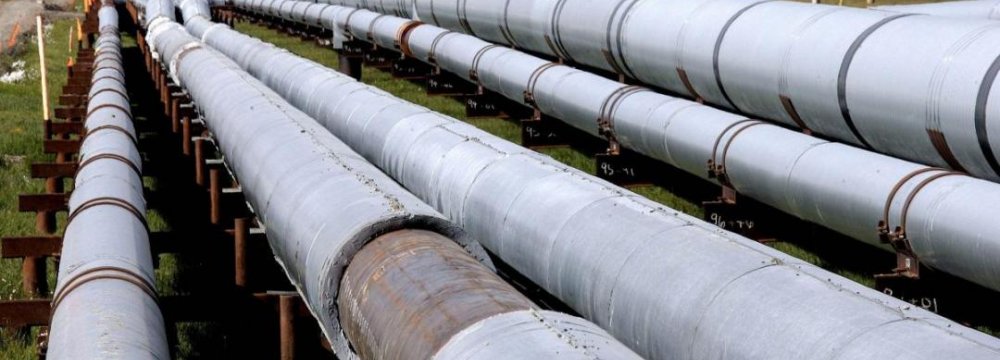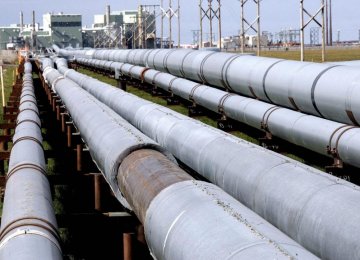Five phases of the South Pars Gas Field have been linked to the Sixth Iran Gas Trunkline, boosting the capacity for a potential increase in the volume of gas exports to the neighboring Iraq.
"After 10 days of sophisticated laboring on the pipelines, phases 13, 14, 19, 22 and 24 are now connected to the national network through IGAT VI," manager of the 10th District Gas Transmission Operation, Ali Nasihatkon, was quoted as saying by Shana.
"The achievement was made without any incident, despite Asaluyeh's extremely hot temperature of more than 50 Celsius. The project is one of the most consequential gas distribution projects in Iran, entirely accomplished by Iranian experts."
Tehran and Baghdad signed a draft deal in 2013 to transfer Iran’s gas to two Iraqi power plants. However, the two countries agreed to postpone exports to the second quarter of 2015, given the political insecurity in the region.
Based on the contract, gas export will start at 4 million cubic meters per day and will gradually reach 25 mcm/d. There are plans to increase exports to 30-50 mcm/d in the future.
A 270-kilometer pipeline stretches from Charmaleh, a village located in the western province of Kermanshah in Iran, to Naft Shahr, a town bordering Iraq and then to power plants in Baghdad. A second route, with a capacity of 30 mcm/d, will pass through Basra. Gas export to Basra is expected to begin in 2016. A 142-kilometer pipeline is to be extended from IGAT VI to Basra.
Iran ranks first in the world in terms of natural gas reserves and third in terms of oil reserves, according to the latest statistics compiled by BP. It holds 17% of the world’s proven natural gas reserves. Nonetheless, it is currently a relatively minor and strictly regional exporter of natural gas via pipelines to three neighboring countries—Turkey, Armenia and Azerbaijan.
South Pars is the world's largest gas field, shared between Iran and Qatar, covering an area of 3,700 square kilometers of Iran's territorial waters in the Persian Gulf. It adjoins Qatar’s North Field, which measures 6,000 square kilometers.










